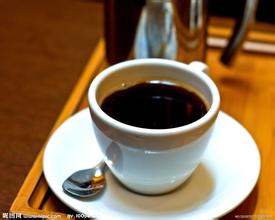Introduction of extraction time by Red Honey method Costa Rican Diamond Mountain Coffee Flavor description Grinding degree treatment method
Flavor description of Diamond Mountain Coffee in Costa Rica
The climatic conditions in Costa Rica are very different, completely subverting the classification of the four seasons of the year, there are only two seasons, the rainy season from April to December, and the dry season from the end of December to April of the following year, also known as summer. The annual average temperature in San Jose, the capital, ranges from 15 ℃ to 26 ℃; the temperature in the coastal areas is relatively high, with a night average temperature of 21 ℃ in the Caribbean and a daily average temperature of 30 ℃. Oil is completely dependent on imports, mainly from Colombia and other countries, and is monopolized by the National Oil Company (RECOPE), with an average annual import of 3 million tons of crude oil. Since 2012, the national oil company has suspended crude oil refining production due to aging facilities, and all fuel oil has been imported instead. In 2013, Costa Rica imported 19.3 million barrels of oil, accounting for US $2.3 billion, accounting for 5.5 per cent of GDP. Coffee trees grown in Costa Rica are Arabica coffee trees. The quality of coffee beans is better and more stable. In order to facilitate picking, coffee trees are maintained at a height of about 2 meters by continuous pruning. The coffee people eat is the taste of seeds in the fruit that are brewed in water. After picking raw coffee beans, the seeds (that is, coffee beans) can be roasted only by peeling, pulp, seed film and sun exposure. Part of the process can be replaced by machines, and the speed of coffee production increases a lot. However, there is no machine to do coffee picking, so you must use manual labor.

Treatment of Las Lajas Estate Red Honey with Red Honey in La La Haas Manor
Country: Costa Rica
Producing area: central valley
Grade: SHB
Treatment method: red honey treatment
Altitude: 1300 to 1500m
Varieties: Caturra, Catuai
Flavor description CUPPING NOTES: mango, dried fruit, coffee fruit, honey Mango,Dried Fruit,Coffee Cherries,Honey
During the harvest season, the sugar content of the fruit is measured by the sugar meter (Brixmeter) often equipped by the wine industry, and the best time and treatment are determined according to the brix sugar content. Only those with more than 20% sweetness will be exposed to the sun. The Brix value of general fruit is 14 for apple, 12 for lemon and 18 for passion fruit, but the coffee cherry of Fenghuang Manor can reach 21-22.
The cultivation of coffee in Costa Rica has a long history, but in the past 10 years, the new "dry" treatment has become a trend, collectively referred to as the "honey treatment". Honey treatment is a kind of treatment between sun drying and water washing. It keeps the coffee clean by washing, and because it is dried in the sun together with the pulp mucosa, it greatly increases the sweetness and caramel flavor of the coffee (the sugar content of the pulp mucosa is extremely high). Honey treatment first appeared in Costa Rica in Central America, mainly because of the lack of water resources in some high-altitude areas of Central America, so the coffee fruit was dried in the sun together with the pulp mucosa after using the pulp sieving machine. Honey-treated coffee beans are graded according to the degree of retention of the pulp (from less to more): yellow honey (20%), red honey (50%) and black honey (100%). The drying time of raw coffee beans treated with red honey is 2-3 weeks, usually due to weather or placed in a dark place. If the weather is clear, the grower will shade part of the sun to reduce the sunlight time. The advantage of this is that it avoids the overfermentation caused by direct exposure, making the overall dried fruit flavor obvious but not too strong, delicate and long-lasting, and other coffees worth mentioning: JuanVinas,PR, H.Tournon, Windmill,SHB, Montebello and SsntaRosa. Fine coffee is generally grown in Geredia and the central canyon. Another striking type of coffee is Sarchi (one of the five towns that represent Costa Rica's Coffee Road), which grows on the slopes of the PoasVolcano volcano, 53km from San Jose. Saatchi, founded in 1949, has a land area of 30770 hectares and grows sugar cane and coffee. The area is also famous for its handicrafts, attracting tourists from all over the world.
Located in the fertile hills of the Poas volcano in the central valley of Costa Rica, Fenghuang Manor is the first producer in Central and South America to produce honey treatment and sun-tanned coffee. It is a completely 100% organically grown coffee manor. The owner believes that organic farming is a better choice for environmental maintenance and family health, even though it faces many technical and organizational challenges. Still adhere to this belief.
Important Notice :
前街咖啡 FrontStreet Coffee has moved to new addredd:
FrontStreet Coffee Address: 315,Donghua East Road,GuangZhou
Tel:020 38364473
- Prev

Introduction to extraction time of Ethiopian Sidamo Coffee Flavor description method
Sidamo Coffee Flavor Grinding Variety other legends are Shack, the guardian saint of the Arabian Peninsula. Chuck Omar, a disciple of Caldi, was a highly respected and beloved chief in Mocha, but he was expelled by his people for committing a crime. Shack. Omar was exiled to Osama in the country, where he stumbled upon the fruit of coffee. It was 1258.
- Next

Ethiopian washing and sunbathing Yega Chuefei flavor description extraction time taste characteristics of coffee beans
The place where Yega Chuefei Wauka Coffee is grown is a paradise on earth, a small mountain village, full of weapons, like spring all the year round. Even in summer, there is a gentle breeze, cool but not hot. The comfortable and pleasant climate not only creates a refreshing living environment, but also breeds a coffee flavor with unique citrus and floral aromas. In these places, coffee trees are mostly among farmers.
Related
- Detailed explanation of Jadeite planting Land in Panamanian Jadeite Manor introduction to the grading system of Jadeite competitive bidding, Red bid, Green bid and Rose Summer
- Story of Coffee planting in Brenka region of Costa Rica Stonehenge Manor anaerobic heavy honey treatment of flavor mouth
- What's on the barrel of Blue Mountain Coffee beans?
- Can American coffee also pull flowers? How to use hot American style to pull out a good-looking pattern?
- Can you make a cold extract with coffee beans? What is the right proportion for cold-extracted coffee formula?
- Indonesian PWN Gold Mandrine Coffee Origin Features Flavor How to Chong? Mandolin coffee is American.
- A brief introduction to the flavor characteristics of Brazilian yellow bourbon coffee beans
- What is the effect of different water quality on the flavor of cold-extracted coffee? What kind of water is best for brewing coffee?
- Why do you think of Rose Summer whenever you mention Panamanian coffee?
- Introduction to the characteristics of authentic blue mountain coffee bean producing areas? What is the CIB Coffee Authority in Jamaica?

